 Reduce the dividend and the divisor to like fractional units, then divide the numerator of the dividend by the numerator of the divisor. RULE II. — "Invert the divisor and proceed as in multiplication. Reduce the dividend and the divisor to like fractional units, then divide the numerator of the dividend by the numerator of the divisor. RULE II. — "Invert the divisor and proceed as in multiplication.  A Complete Arithmetic ... - Page 243by Frank H. Hall - 1899 - 447 pagesFull view A Complete Arithmetic ... - Page 243by Frank H. Hall - 1899 - 447 pagesFull view - About this book
 | Roswell Chamberlain Smith - Arithmetic - 1841 - 324 pages
...-gg-_._-y=-r-, as before. A. f. 50. Hence, to abbreviate the process of dividing one fraction by another — Divide the numerator of the dividend by the numerator of the divisor, and the denominator by the denominator, if it can be dont without a remainder, otherwise the quotient... | |
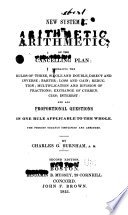 | Charles Guilford Burnham - Arithmetic - 1841 - 324 pages
...quantity does not affect its value. Therefore, when the denominator of dividend and divisor are altM, divide the numerator of the dividend by the numerator of the divisor, and the quotient will be the answer. Operation. 12 2. If a bushel of corn cost f of a dollar, how much... | |
 | Roswell Chamberlain Smith - Arithmetic - 1842 - 320 pages
...="5", as before. A. f. 50. Hence, to abbreviate the process of dividing one fraction by another — Divide the numerator of the dividend^ by the numerator of the divisor, and the denominator by the denominator, if it can be done without a remainder, otherwise the quotient... | |
 | George Berkeley, George Newenham Wright - Philosophy, Modern - 1843 - 468 pages
...whence results -%\. NB If the given fractions be homogeneous, the shorter and more elegant way is to divide the numerator of the dividend by the numerator of the divisor as often as it measures it. Thus, £ being divided by i, the quotient will be 2, for whatever things... | |
 | George Berkeley - Philosophy, Modern - 1843 - 470 pages
...whence results ™v. NB If the given fractions be homogeneous, the shorter and more elegant way is to divide the numerator of the dividend by the numerator of the divisor as often as it measures it. Thus, | being divided by -j, the quotient will be 2, for whatever things... | |
 | George Hutton (arithmetic master, King's coll. sch.) - 1844 - 276 pages
...the numerator of the dividend has more than the numerator of the divisor. 5. Hence we have only to divide the numerator of the dividend by the numerator of the divisor exactly as if they were whole numbers, and mark off in the quotient just as many decimal places as... | |
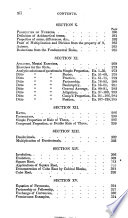 | James Bates Thomson - Arithmetic - 1846 - 354 pages
...of a dollar ? We first reduce the fracFirst Operation. tions to a common denominator ; (Art. 125;) then divide the numerator of the dividend by the numerator of the divisor, as above. One. 1. After the fractions are reduced to a common denominator, it will be perceived that... | |
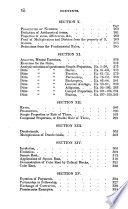 | James Bates Thomson - Arithmetic - 1846 - 402 pages
...Hence, 1 39. To divide a fraction by a fraction. 1. If the given fractions have a common denominator ; Divide the numerator of the dividend by the numerator of the divisor. II. When the fractions have not a cbmmon denominator ; Invert the divisor, and proceed as in multiplication... | |
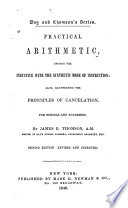 | James Bates Thomson - Arithmetic - 1846 - 362 pages
...Hence, 1 39. To divide a fraction by a fraction. I. If the given fractions have a common denominator ; Divide the numerator of the dividend by the numerator of the divisor. II. When the fractions have not a common denominator; Invert the divisor, and proceed as in muUiplication... | |
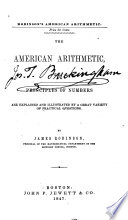 | James Robinson (of Boston.) - 1847 - 304 pages
...dividing one fraction by another are the reverse of those in multiplying one fraction by another, we may divide the numerator of the dividend by the numerator of the divisor for the numerator of the quotient, and the denominator of the dividend by the denominator of the divisor... | |
| |